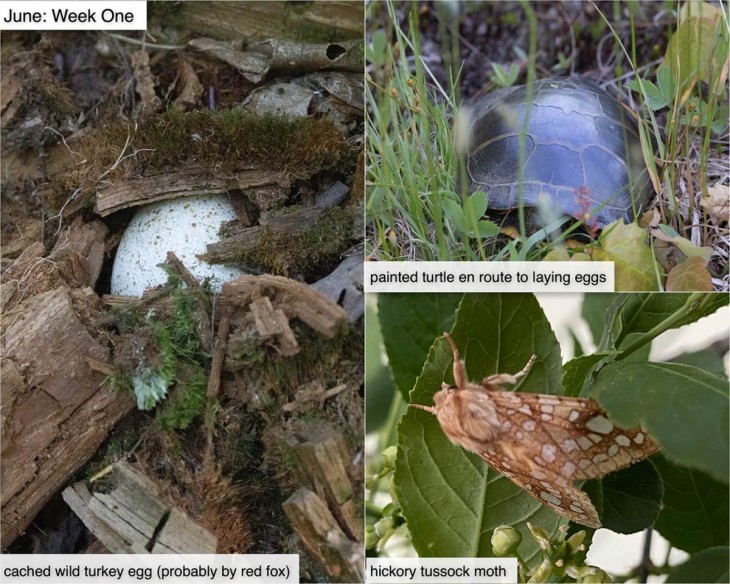This week in the woods, we discovered a wild turkey egg tucked within a decaying tree stump and partly covered with moss and wood. To figure out what had happened, we checked with Northern Woodlands Tracking Tips columnist Susan C. Morse, who is also the founder and science director of the nonprofit Keeping Track. Her best guess is that this was the work of a red fox who was planning ahead for a future meal. “Foxes are famous for caching eggs,” she explained. They’ll cache other food as well; for example, several summers ago, we watched a fox dig up a dead turtle that it had buried beside its den.
Speaking of turtles, and egg caching, we found this painted turtle about 30 yards uphill from the nearest wetlands, presumably on its way to lay and bury its eggs in the field’s sandy soil. In our region, there are several turtle species making trips out of the water to lay eggs right now. These journeys often involve dangerous crossings of roads, so please keep a lookout and help the turtles on their way – always in the direction they are headed. Here’s a link with tips on how to move a turtle safely (note: never pick it up by the tail). And if you’d like to learn more about native turtles and efforts to help them, check out this Community Voices interview with Dallas Huggins, co-founder of the New Hampshire Turtle Rescue, and visit the Vermont Reptile & Amphibian Atlas.
Finally, just in time for the Northern Woodlands Moth Ball (follow the link for registration info). Meghan McCarthy McPhaul discovered this hickory tussock moth perched near her home. These exceptionally pretty moths appear from May through June, but because they fly at night, they go mostly unnoticed. More conspicuous, in late summer, are the species’ caterpillars, which are white and fuzzy with black stripes and hairy spikes. These spikes (setae) have barbs and can lodge in human skin, causing itching and painful rashes. Despite their name, hickory tussock moth caterpillars aren’t specialists and can feed on the leaves of numerous host trees and other plants.
What have you noticed in the woods this week? Submit a recent photo for possible inclusion in our monthly online Reader Photo Gallery.


